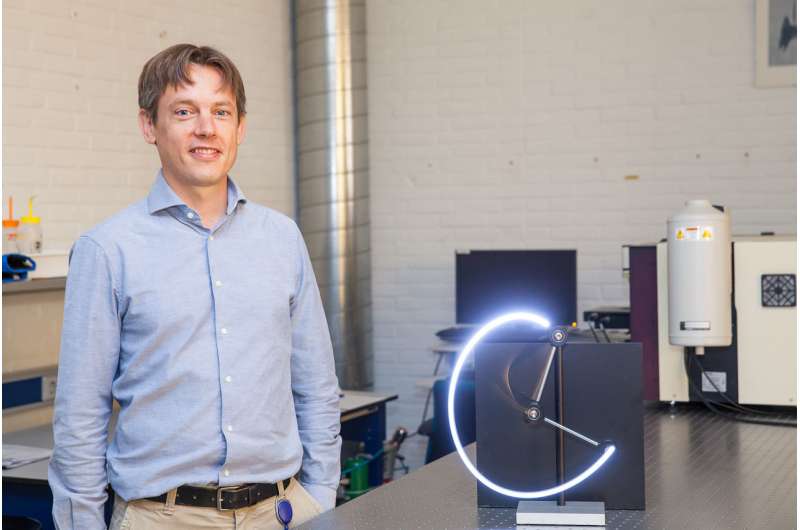New and faster method to determine material properties of graphene

Peter Steeneken (professor) and Farbod Alijani (assistant professor) from the Dynamics of Micro and Nanosystems Section at the Department of Precision and Microsystems Engineering have developed a new method to determine the material properties of graphene with the aid of high-frequency non-linear dynamics. Their new method makes it possible to accurately measure the Young's modulus (elastic modulus) of graphene and enables a potentially quicker measurement. This could make it easier to characterise a large number of membranes in a production process, for example. This week, Peter and Farbod published their article entitled 'Nonlinear dynamic characterization of two-dimensional materials' in Nature Communications.
In this publication, Peter and Farbod outline a new method to learn more about ultra-thin materials that are only several atoms thick, such as graphene. By means of an electrostatic force of a few piconewtons, they and PhD student Dejan Davidovikj were able to bring graphene membranes into vibration. With the aid of an interferometric setup, they carried out a measurement of the dynamics of these membranes with sub-nm resolution at frequencies of more than 10 MHz. By providing sufficient force to the membranes non-linear resonance characteristics become visible. These characteristics have been observed before, but until now, no good method for analysing them for atomically thin materials was available. In collaboration with McGill University (Canada) and the Faculty of Applied Sciences, a new model has been developed that can use these non-linear resonances to determine the Young's modulus.
The Young's modulus is a parameter that describes the mechanical elasticity of this new material, which is important to monitor in device production processes. Moreover, the prediction is that continuum mechanics will no longer be applicable to layers that are a single atom thick. For these reasons an accurate measurement of the Young's modulus of graphene is vitally important. However, the Young's modulus of graphene is difficult to measure, and until now it was determined by means of atomic force microscopy, which is disadvantageous, because the sharp point of the AFM can influence the measurement. Moreover, the new method is potentially much quicker, which is beneficial when characterising a large number of membranes in a production process.
More information: D. Davidovikj et al. Nonlinear dynamic characterization of two-dimensional materials, Nature Communications (2017). DOI: 10.1038/s41467-017-01351-4
Journal information: Nature Communications
Provided by Delft University of Technology




















